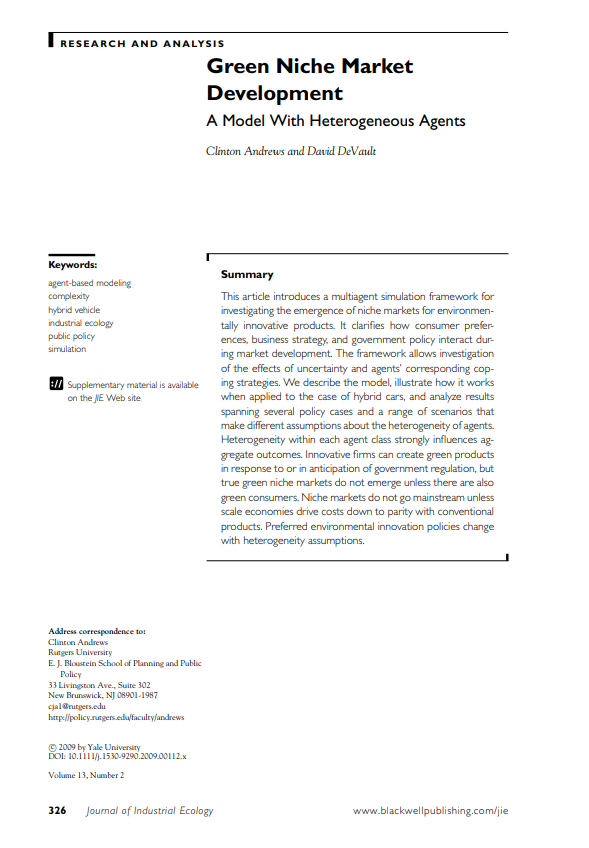This article introduces a multiagent simulation framework for investigating the emergence of niche markets for environmentally innovative products. It clarifies how consumer preferences, business strategy, and government policy interact during market development. The framework allows investigation of the effects of uncertainty and agents’ corresponding coping strategies. We describe the model, illustrate how it works when applied to the case of hybrid cars, and analyze results spanning several policy cases and a range of scenarios that make different assumptions about the heterogeneity of agents. Heterogeneity within each agent class strongly influences aggregate outcomes. Innovative firms can create green products in response to or in anticipation of government regulation, but true green niche markets do not emerge unless there are also green consumers. Niche markets do not go mainstream unless scale economies drive costs down to parity with conventional products. Preferred environmental innovation policies change with heterogeneity assumptions.
Green Niche Market: A Model with Heterogenous Agents
Citation:
Clinton Andrews and David DeVault, “Green Niche Market: A Model with Heterogenous Agents, ” Journal of Industrial Ecology, 2009, 13 (2), special issue on complexity.
